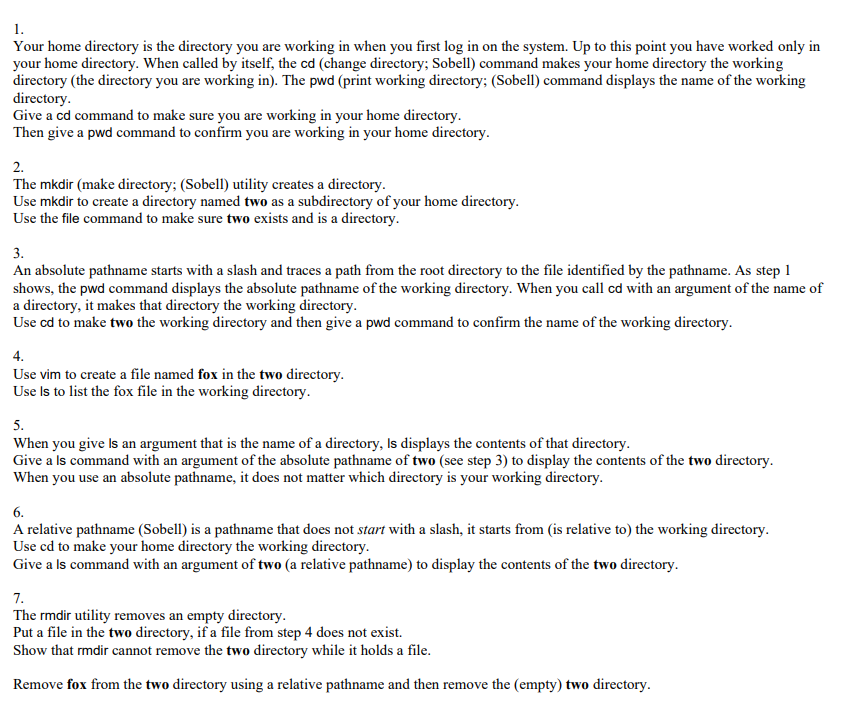
1. Your home directory is the directory you are working in when you first log in on the system. Up to this point you have worked only in your home directory. When called by itself, the cd (change directory; Sobell) command makes your home directory the working directory (the directory you are working in). The pwd (print working directory; (Sobell) command displays the name of the working directory. Give a cd command to make sure you are working in your home directory. Then give a pwd command to confirm you are working in your home directory. 2. The mkdir (make directory; (Sobell) utility creates a directory. Use mkdir to create a directory named two as a subdirectory of your home directory. Use the file command to make sure two exists and is a directory. 3. An absolute pathname starts with a slash and traces a path from the root directory to the file identified by the pathname. As step 1 shows, the pwd command displays the absolute pathname of the working directory. When you call cd with an argument of the name of a directory, it makes that directory the working directory. Use cd to make two the working directory and then give a pwd command to confirm the name of the working directory. 4. Use vim to create a file named fox in the two directory. Use Is to list the fox file in the working directory. 5. When you give Is an argument that is the name of a directory, Is displays the contents of that directory. Give a Is command with an argument of the absolute pathname of two (see step 3) to display the contents of the two directory. When you use an absolute pathname, it does not matter which directory is your working directory. 6. A relative pathname (Sobell) is a pathname that does not start with a slash, it starts from (is relative to) the working directory. Use cd to make your home directory the working directory. Give a Is command with an argument of two (a relative pathname) to display the contents of the two directory. 7. The rmdir utility removes an empty directory. Put a file in the two directory, if a file from step 4 does not exist. Show that rmdir cannot remove the two directory while it holds a file. Remove fox from the two directory using a relative pathname and then remove the (empty) two directory







